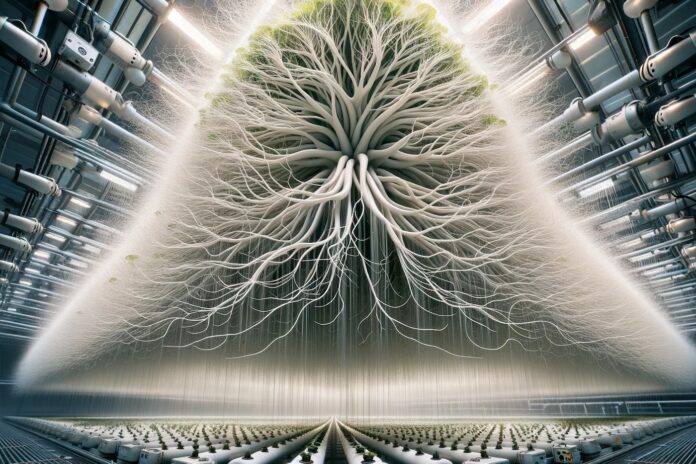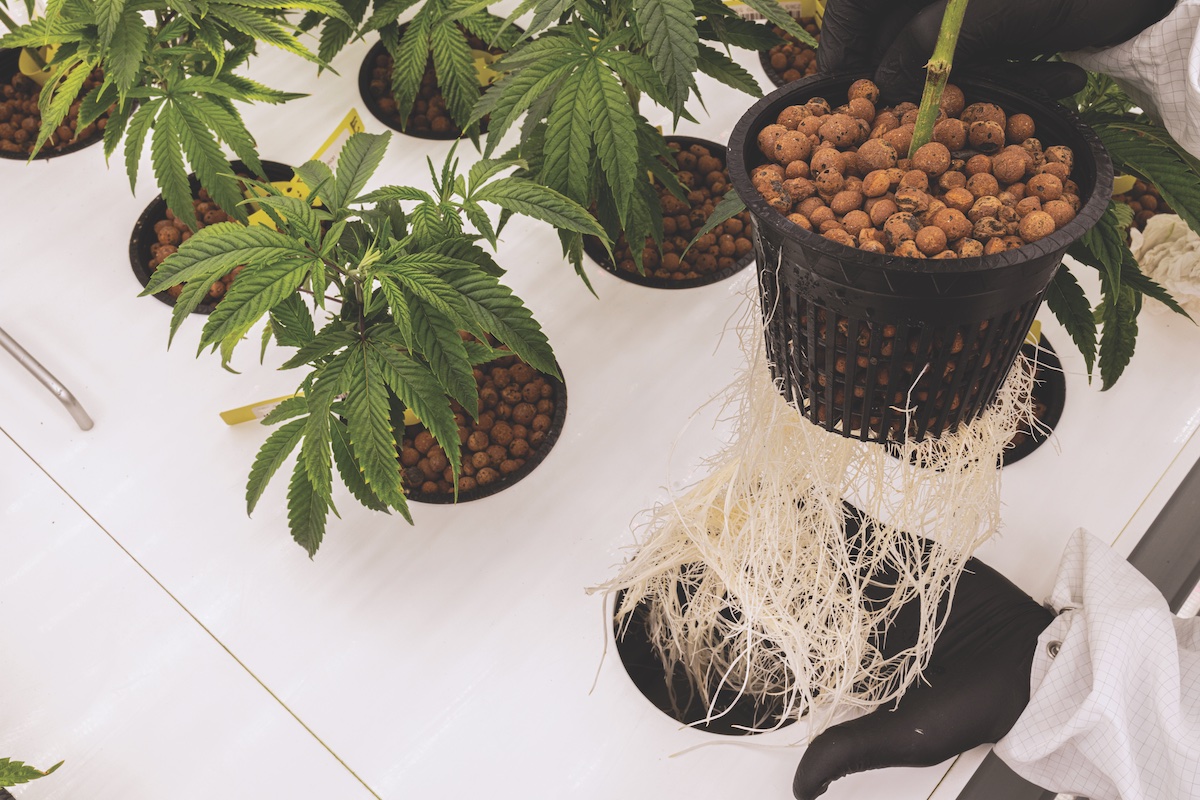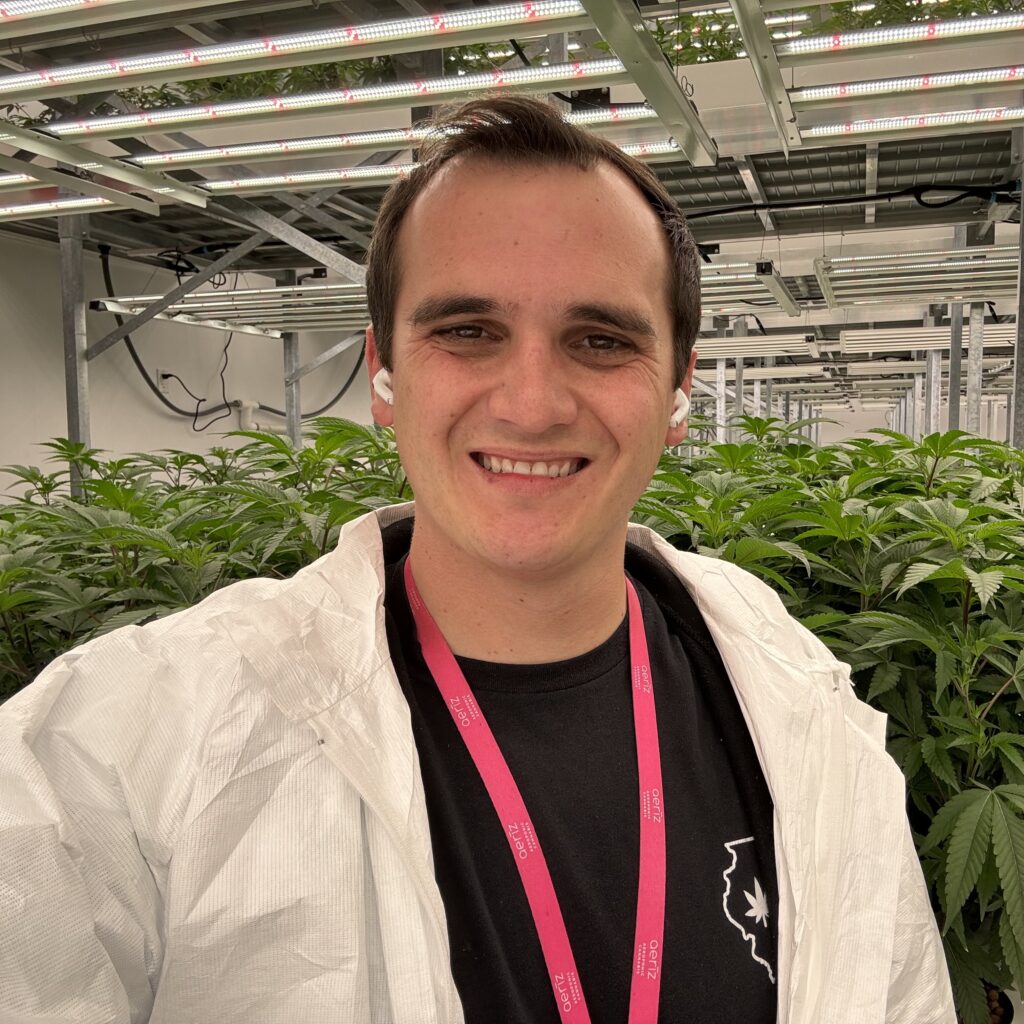
Cannabis is an incredible plant that can be grown in a tiny pot or spread freely across mountains in the wild. Over the years, cultivation methods have evolved to meet the needs of different microclimates, yield quotas, and sustainability imperatives. My company uses aeroponic methods instead of soil or hydroponics, and they’re helping us reach our sustainability goals.
Although many cultivators start clones aeroponically, full-life-cycle aeroponic cultivation at scale is not all that common. Consequently, we often find ourselves fielding questions about how the method works, because at first it doesn’t seem to make sense. How does one grow plants with just air and no soil? The answer to that question is both simple and complex.
Let’s start with the simpler side. While traditional cultivation uses well-draining, slightly acidic, and nutrient-rich soil as the substrate for growing plants, aeroponic and hydroponic cultivation methods utilize soil-free mediums such as coco coir, perlite, or vermiculite. Our medium of choice is reusable expanded clay pebbles, because they’re long-lasting, provide good airflow and drainage, and are environmentally conscious.

What is aeroponic cultivation?
Aeroponic cultivation involves suspending plants in the air and misting their roots with a nutrient solution. The method is not to be confused with hydroponic cultivation, which involves submerging plants in (or providing a sporadic flow of) a solution of water and nutrients.
Otherwise, hydroponic and aeroponic cultivation methods are quite similar. In fact, we wouldn’t have aeroponics if it weren’t for the innovations hydroponic growers pioneered. Both methods allow cultivators significant control over how the plants in their care mature and can lead to fewer diseases and pests than are found in soil-based environments.
Aeroponic benefits
But aeroponic growing provides other benefits, too. Perhaps the most notable is a reduction in environmental impact. A study published in the Journal of Cannabis Research found sungrown “cannabis in a growing season needs twice as much as the water required by maize, soybeans, and wheat.” The study noted outdoor grows apply as much as five and one-half gallons of water per plant per day at the height of growing season. A separate study by the University of Nevada, Reno, College of Agriculture, Biotechnology & Natural Resources found hydroponic techniques can reduce water usage by as much as 90 percent.
But because aeroponic systems are airtight, mist plants’ roots precisely as needed, and recycle the water the roots don’t absorb (creating minimal runoff), water requirements can be even lower than with hydroponics. According to a study published in Digital Agritechnology in 2022, aeroponic agricultural operations consume up to 70 percent less water than hydroponic operations.
Aeroponic systems provide more efficient nutrient management, as well. Hydroponic systems that submerge plants in water require regular oxygen monitoring and maintenance to ensure the plants don’t suffocate. This risk doesn’t exist with aeroponic techniques, because the roots are exposed to air at all times.
Aeroponic systems also lower the risk of developing diseases or attracting pests. Hydroponic growing methods significantly reduce the risk of many common diseases when compared to soil cultivation, but the risk remains higher than with aeroponic methods because ventilation systems used to control humidity in hydroponic grow rooms let in air—and potentially foreign organisms—from the outside.
Our grow runs on a closed-loop system, meaning all the water and nutrients are recycled to minimize waste, no outside air makes its way in, and the canopy is protected from humidity created by the misters. By the end of our harvest, we have virtually no waste, because we reuse the net pots and clay pebbles.
The major benefit of our closed-loop aeroponic system is that we can work out exactly what our plants need and give it to them without ever overdoing anything. We’re not putting water into the soil, where the excess would go to waste. Instead, we mist our plants with the exact amount of water and nutrients they need to thrive, and anything the plants don’t drink gets put right back into the system to mist again later.
Aeroponic drawbacks
Despite their advantages, aeroponic systems aren’t perfect. They’re expensive to establish, labor-intensive, and require a good deal of technical expertise to maintain. Systems must be redundant in case of power outages or equipment malfunction, because dry roots quickly die. And even though healthy roots constantly are exposed to air, if you’re not careful they can develop rot or mold.
Still, we’ve found aeroponic growing rewarding, especially from an environmental perspective. Since 2015, we’ve grown more than 94,000 plants, 328,000 feet of roots, and 110 strains, all while saving more than 288,000 pounds of soil. The market responds well to companies making greener choices, too. Many consumers are environmentally conscious, and more of them than ever are trying to make sustainable choices. This gives mindful companies a competitive advantage and is pushing the entire industry to be more eco-friendly.
Conclusion
Let’s face it: Minimizing waste and improving sustainability aren’t optional in an industry that promotes itself as a more health-conscious option to pharmaceuticals, alcohol, and tobacco. Cultivation is the bedrock of our industry, and growers have an opportunity to be leaders in sustainability.
The planet is at a critical tipping point, with major environmental concerns facing the global population. Weather extremes, food and water insecurity, and rising sea levels are just some of the crises we face. Aeroponic growing can be part of the solution.

Zack Bigg has served as head grower at multistate operator Aerīz since 2018. Aerīz, an aeroponic cultivator, maintains grows in Arizona, Illinois, and California. Bigg is devoted to ethical cultivation and constantly is looking for new ways to help the company meet its sustainability goals.
